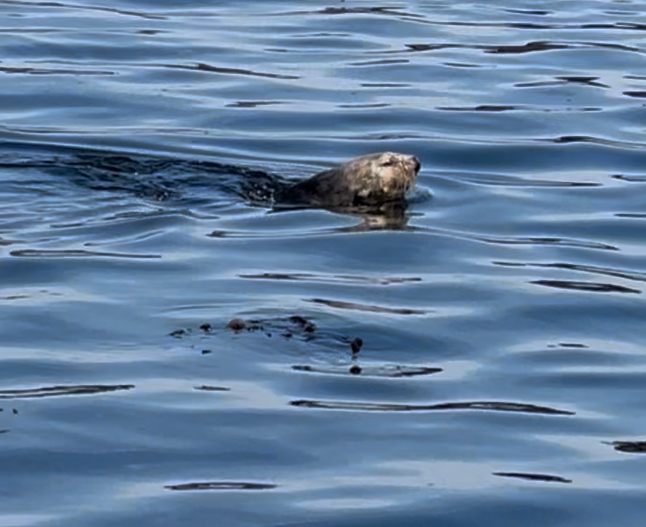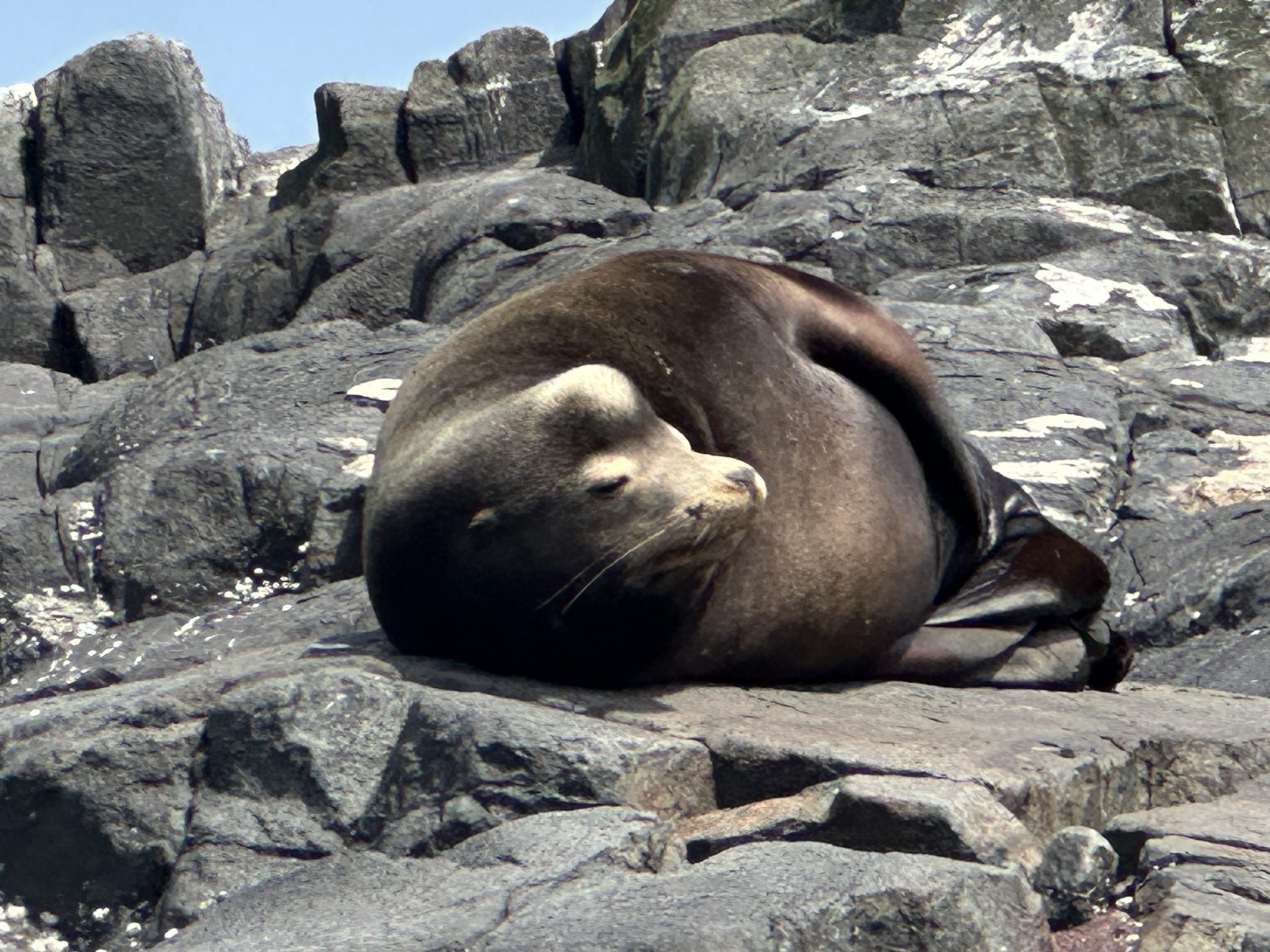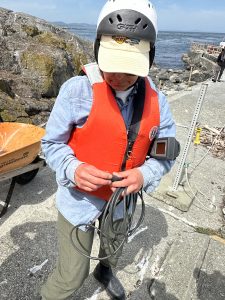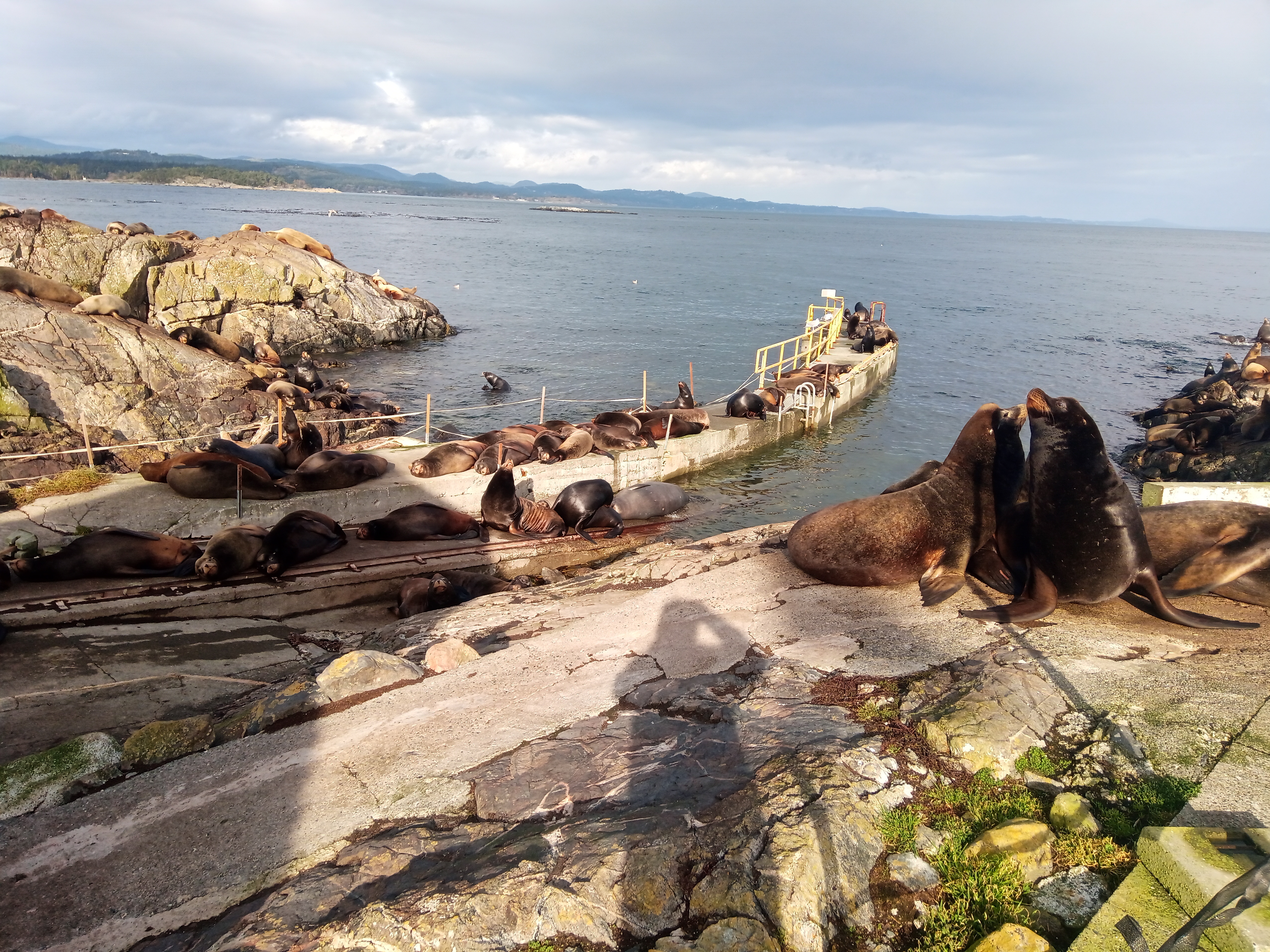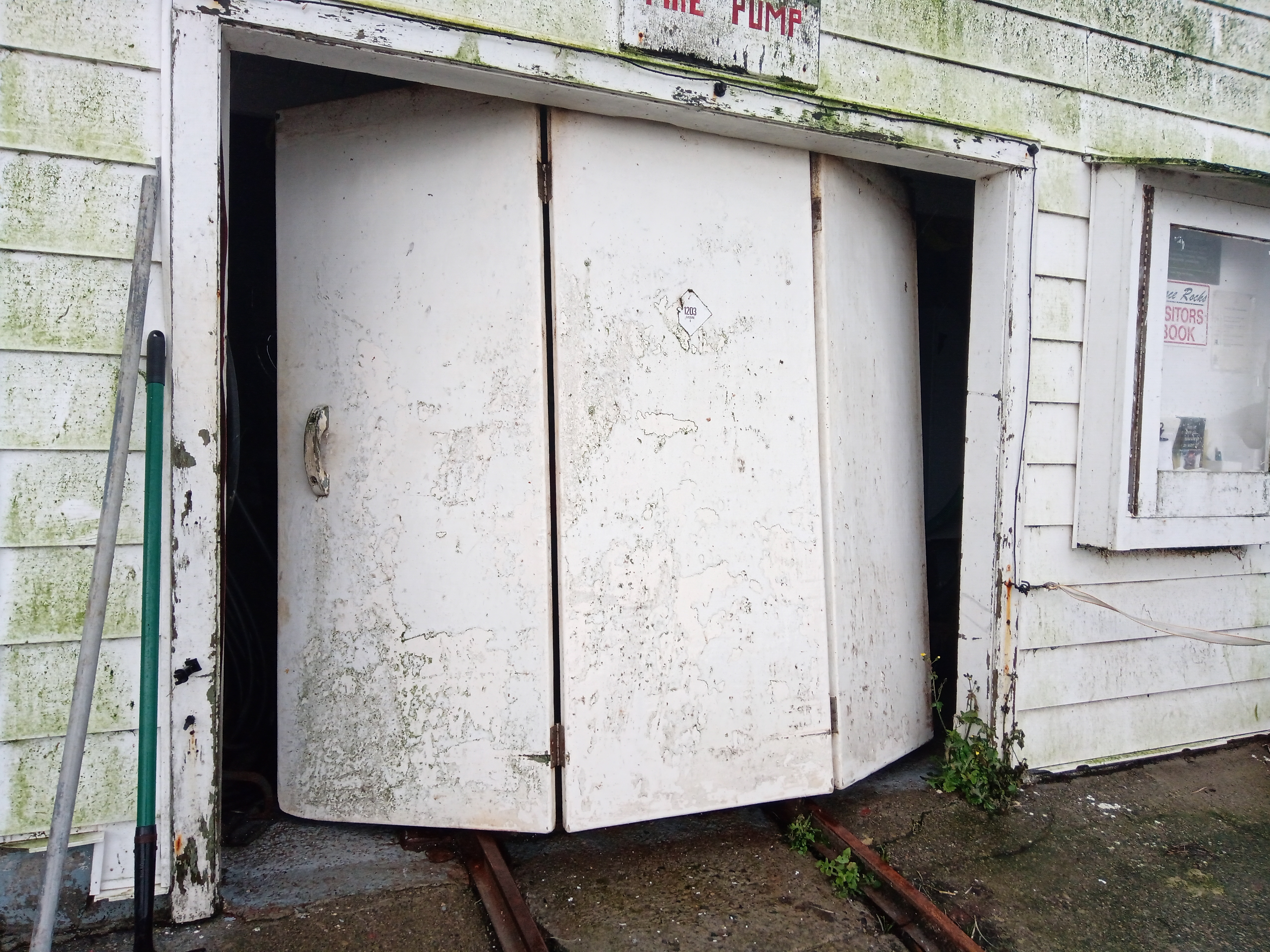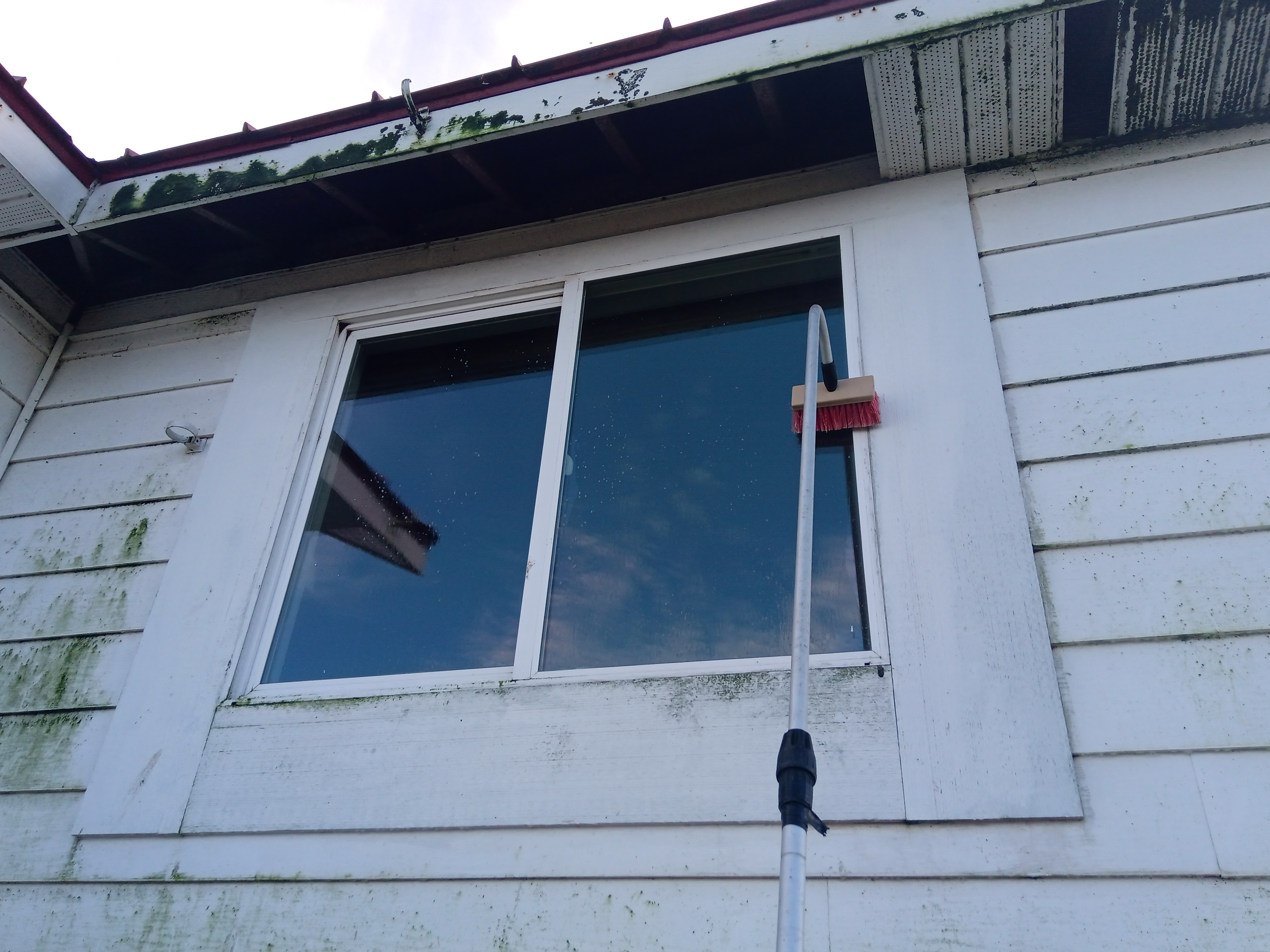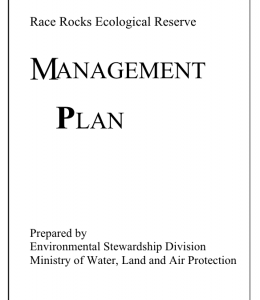Ecological Reserve warden Garry Fletcher went out to Race Rocks in May 2025 with Laurag Verhegge and Isabelle Groc on the new Pearson College Boat with College staff Richard Taggart and Mike White and electrician Jordan Cole, who was going out to test and repair corroded attachments on some of the solar panels.
At the mouth of Pedder Bay near the small island on the north side we came across a sea otter foraging for crabs. This was a great opportunity for Isabelle to get some good photos for her project she is doing on Sea Otters.
 On our arrival at the Ecological Reserve, we were greeted at the jetty by the Ecoguardian hired by Lester Pearson College, Christine Chourmouzis. Christine will be there through the next few weeks in July. I might add that I have appreciated her excellent coverage of events at Race Rocks in this log for this website, and she has been an effective warden in looking after the operations on the island.
On our arrival at the Ecological Reserve, we were greeted at the jetty by the Ecoguardian hired by Lester Pearson College, Christine Chourmouzis. Christine will be there through the next few weeks in July. I might add that I have appreciated her excellent coverage of events at Race Rocks in this log for this website, and she has been an effective warden in looking after the operations on the island.
One female elephant summer has stayed on the island for the summer, normally they have all left by now and return later in the year. She is moulting now. One photogenic California Sea lion also greeted us on arrival.
Christine has also discovered several new plant species on the island. She showed these to me and I have posted them on iNaturalist where they can be seen. Eventually they will get their own page in the Biodiversity section here.
I was not able to find any Romanzoffia or mist maidens in one of their usual spots but the long ago introduced Turkish gladiolus has spread to a few new locations East of the Ecoguardians residence.
The Glaucous winged gulls were in full nesting mode and one aggressive adult even knocked my hat off while I was on a sidewalk.
One nest contained eggs of different colours. I am am not sure if that is normal.
 Some records are not being recorded on the Davis weather instrument and after a full cleaning some sensors are still not recording so we are looking into that.
Some records are not being recorded on the Davis weather instrument and after a full cleaning some sensors are still not recording so we are looking into that.
 We will be asking BC Parks for a replacement of the ER sign. It has withstood the harsh environment for a good length of time now but is showing wear and missing one section.
We will be asking BC Parks for a replacement of the ER sign. It has withstood the harsh environment for a good length of time now but is showing wear and missing one section.
Christine did the seawater measurements while we were there. A probe is lowered of the end of the jetty to a meter depth every day at the time of the maximum flooding current. These records are submitted monthly to the Institute of Ocean Sciences at Pat Bay. This link provides the seawater records for past months .
https://racerocks,ca/tag/seawater-data/
One of the ecotourism boats passed by while we were there. In a past agreement made with the ecotourism companies and BC Parks, boats are required to stay in the center of the channel in order to comply with regulations for marine mammal viewing .
I noticed that the concrete and wood refuse left in piles from previous construction and repair work that was supposed to be taken off the island by a BC Parks vessel are still there after many reminders by Pearson College staff.
Past warden’s reports are at this link
https://racerocks.ca/category/er-warden-report/





